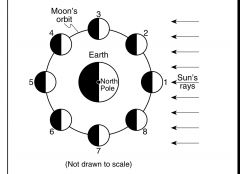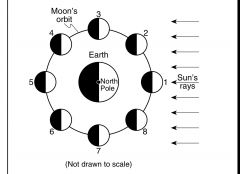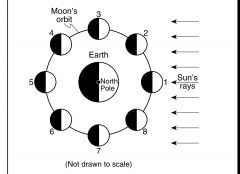![]()
![]()
![]()
Use LEFT and RIGHT arrow keys to navigate between flashcards;
Use UP and DOWN arrow keys to flip the card;
H to show hint;
A reads text to speech;
39 Cards in this Set
- Front
- Back
|
Name the Terrestrial planets: |
mercury venus earth mars |
|
|
The inner Terrestrial planets are composed of __________ and have ________densities. |
rock |
|
|
Name the Jovian planets:
|
Jupiter, Saturn, Uranus, Neptune |
|
|
The Jovian planets are composed of __________ and have _________ average densities
|
gas |
|
|
Planet interiors are layered with each zone becoming more dense as you get to the core. This separation of density during planet formation is a result of the force of ______________ |
gravity |
|
|
The reason that the Moon and Mercury have far more impact craters than the Earth is because they don't have _____________ |
Atmospheres |
|
|
Impact events from asteroids/comets/meteors have in the past caused mass ____________
|
extinctions |
|
|
Why does the moon go through a cycle of phases?
|
it revolves around the Earth
|
|
|
How long does it take for the moon to complete a cycle of phases?
|
29.5 days
|
|
|
How long does it take the moon to revolve around the Earth?
|
27.3 days look it up on page 15 ESRT
|
|
|
Why do we only see one side of the moon from Earth?
|
it rotates and revolves at the same rate
|
|
|
What are the two moon phases when eclipses are possible?
|
full and new |
|
|
What type of eclipse occurs when the moon is blocked out by Earth’s shadow? |
a lunar |
|
|
What 2 moon phases result in spring tides (large tidal difference)
|
full and new
|
|
|
What phases result in neap tides? |
first and last quarter
|
|

Which position is the full moon |
5 |
|

Draw the moon phase as seen |

Waxing gibbous |
|

Which 2 positions would result |
3 and 7 the first and last quarter |
|
|
When did the the solar system form? |
5 billion years ago |
|
|
Why does the moons apparent diameter appear to change! |
Because the distance between earth and the moon change due to the moons elliptical orbit |
|
|
Approximately how many hours will pass in between two high tides! |
12 |
|
|
A New moon and Full moon occur every month, why then don't eclipses occur more frequently? |
Because the moon's orbit is tilted |
|
|
What types of an eclipse occurs when the moon's shadow falls on the Earth's? |
Solar |
|
|
Where are most asteroids found? |
In the asteroid belt between Mars and Jupiter . |
|
|
What are asteroids made of? |
Rock and metal |
|
|
Where are most comets found? |
Kuiper belt |
|
|
What are comets made of? |
Rocks and ice |
|
|
Which group of planets have the longest years? |
Jovian/ gas giant |
|
|
Which. Group of planets are small and dense? |
Terrestrial |
|
|
How did the moon form? |
From an object that impacted the early Earth |
|
|
What is the shape of the moon's orbit? |
An oval (ellipse) |
|
|
The highest high tide will occur during which two moon phases? |
New and full |
|
|
Why do we only see one side of the moon from the Earth? |
It rotates and revolves at the same rate |
|
|
What does the period of rotation for a planet measure? |
The length of day |
|
|
A planet's year is a measurement of how long it takes to....... |
Revolve |
|
|
Which celestial object has a characteristic tail? |
A comet |
|
|
When the moon is becoming more illuminated we say that it is ......... |
Waxing |
|
|
What phase is the moon in when zero percent of the lit side is visible from Earth? |
New |
|
|
Which type of planets have rings? |
Jovian |

